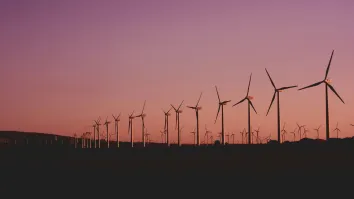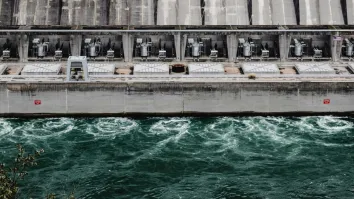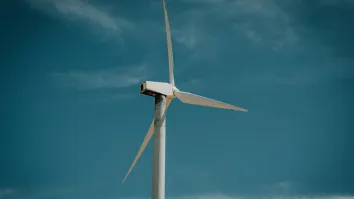
Will coal and gas burn bright or burn out?
Asia is hungry for energy, which coal and gas-fired generation seem ready to address, but their dominance over cleaner alternatives is becoming less certain.
When Malaysia and Indonesia reached respective milestones earlier this year – the former building a landmark 1,000 MW coal power plant and the latter a gas-fired power plant in the undersupplied Gorontalo province – it showed the potential of coal and gas-fired power plants to meet Asia’s enormous energy needs.
But analysts reckon that even with the advantages coal and gas-fired power plants offer, especially amid technological leaps that that boost efficiency and lower harmful emissions, clean generation alternatives continue to gain ground. Factors such as mounting air pollution and cheaper renewable energy costs are presenting convincing arguments for Asian governments to shrink the role of coal and gas in the region’s long-term energy mix.
Key role in Asia’s fuel mix
Proponents of coal and gas-fired power plants expect them to remain popular in Asia. Thousands of such plants are indeed in the pipeline, although critics warn of falling utilization among Asian coal power plants and rising concerns on long-term gas supply, which could strengthen the case for renewables and nuclear power.
“In looking at the overall energy needs of Asia for the next 25 years, it is clear that coal and natural gas will both play a key role in the region’s fuel mix,” says Dr. Ivan Marten, global leader energy practice, senior partner and managing director at The Boston Consulting Group.
He enumerates three focal reasons for this positive assessment: Abundance, affordability, and availability.
“Both gas and coal are abundant, and gas is becoming even more so thanks to new technologies such as hydraulic fracturing – and more recently high pressure fracturing and re-fracturing – which has significantly increased natural gas production in the United States,” says Marten.
“Gas prices have fallen drastically in the recent years because of increased supply, and coal prices have fallen, too, because more gas is replacing coal for electricity generation in the United States. And they are both available, meaning that their supplies are easily accessible in response to demand and largely secure,” he adds.
For the International Energy Agency, coal and natural gas are the two most important fuels for electricity generation globally, with a share of some 40% and 22% respectively in 2012. Each offers compelling advantages for a region that is looking to generate more energy to sustain their growing economies.
Coal is more widely available and lower cost fuel than natural gas. But natural gas-fired power plants are not only generally cheaper and quicker to build than coal-fired power plants, but also tend to have higher cycle efficiencies and greater operational flexibility.
Proponents of coal and gas-fired power plants expect them to remain popular in Asia due to their inherent abundance, affordability, and availability. Thousands of such plants are indeed in the pipeline, although critics warn of falling utilization among Asian coal power plants and rising concerns on long-term gas supply, which could strengthen the case for renewables and nuclear power.
Southeast Asia warms up to coal
Currently, Malaysia and other Southeast Asian countries like Thailand and Vietnam have shown increased emphasis for coal-fired capacity due to domestic gas supply shortages and gas price increases resulting in expensive liquefied natural gas (LNG) imports, according to IEA.
In March 2016, Malakoff Corporation Berhad’s (Malakoff) 1,000 megawatt (MW) Tanjung Bin Energy (TBE) power plant entered commercial operations, a major milestone as it is Malaysia’s first independent power producer (IPP) project that was awarded by the Energy Commission via a competitive bidding process.
“During its development, we challenged ourselves to deliver an affordable electricity tariff to the off-taker, Tenaga Nasional Berhad (TNB), and ultimately to the consumers at large,” says Habib Husin, executive vice president of Malakoff.
TBE makes its generating capacity available to TNB under a 25-year power purchase agreement whilst a supply and transportation agreement between TNE and TNB Fuel Services Sdn Bhd ensures a steady and quality coal supply for the power plant.
A major concern for coal-fired power plants is their environmental impact, but the Malaysian project deploys GE modern steam turbine and generator technology, ultra-supercritical boiler and proprietary environmental control systems.
According to Malakoff, the plant to generates affordable electricity at reduced environmental impact. Emission of nitrous oxide, sulphur oxide and dust at the plant will be lessened through the use of low NOx burners, a highly efficient seawater Flue Gas Desulphurisation facility and fabric filters. This technology increases the plant’s net efficiency and enables it to utilise 100% sub-bituminous coal.
“TBE is another demonstration of GE's commitment to the region’s development and the need for energy mix diversification especially on coal generation,” says Andreas Lusch, CEO of GE Steam Power Systems. “The highly efficient ultra-supercritical power plant delivered by GE Steam Power Systems will provide an additional capacity of 1,000 MW for Peninsular Malaysia, providing energy equivalent to almost two million people.”
Malaysia’s TBE project has also contributed to developing the economy of local communities with more than 5,200 direct jobs created during the project peak and 100% utilization of local skilled workers. The project also created additional jobs related to equipment supply, manufacturing, engineering, transportation, and other services. The implementation of rigorous training programmes also ensured that teams had proficiency operating state-of-the-art ultra-supercritical technology.
Reduction in gas subsidies in Malaysia and recent disruptions in the gas supply in Thailand will push up coal demand in those countries by about 4.8% per annum through 2040, says Dr. Ivan Marten, global leader energy practice, senior partner and managing director at The Boston Consulting Group.
Coal’s utilisation conundrum
Four countries in Asia – China, India, Indonesia, and Vietnam – have pipelines of 1,824 coal power plants either planned or under construction, accounting for 74% of the estimated global pipeline, but the Energy & Climate Intelligence Unit (ECIU) says number of factors suggest that these nations will eventually build far fewer than this pipeline number.
Looking at the historical trend worldwide in the past half-decade, from 2010-2015, shelved or cancelled coal power proposals outnumbered completed power plants by two to one worldwide. ECIU notes that for the four Asian countries with a large pipeline for coal power plants, the relevant rate is 1.5 to one, or 635 gigawatts (GW) cancelled or shelved, compared with 411 GW completed. For India, the ratio is four to one, with 390GW cancelled since 2010 compared with 98GW completed.
“In both India and China, coal plants are being used for less and less of the time,” says ECIU. “Depending on trends in power prices, this may make new plants progressively less profitable, and less attractive to investors.”
In China, the average utilisation rate, or the proportion of time that power plants run, has fallen, for coal, from 60% in 2011 to below 50% last year. This means Chinese utilities have been left with over-built capacity owing to many reasons. ECIU cites a credit-fuelled industrial investment binge, slowing economic growth, over-optimistic expectations for electricity demand, lagging grid and other supporting infrastructure, and a failure to foresee expansion in and falling costs of renewable generation.
“In China, the biggest brake comes from rapidly slowing economic growth combined with ambitious targets for energy efficiency and clean generation. Clean energy may be sufficient to meet all of the country’s projected electricity demand growth, thus consigning any new coal power plants to an increasingly idle surplus,” says ECIU.
For India, the similarly defined load factor, or the proportion of nameplate capacity used, has fallen from a peak in 2008 of above 78%, to below 65% last year. The problem can be attributed to a failure of infrastructure investment, coal shortages, and cash-strapped grid operators.
This trend in falling utilisation rates is likely to continue for China and India, says ECIU, as both countries ramp up their renewable and nuclear generation, which hold the advantage of having near-zero operating costs once built.
“Given that real-time electricity despatch is usually on the basis of least marginal cost, these will displace fossil fuel power when available. The result may be falling and unpredictable utilisation rates, and thus greater investment risks in fossil fuel-fired power, as seen in Germany,” says ECIU.
China has notably been investing heavily in technologies that will enable its electricity system increasingly to use variable renewables.
Cleaner alternatives to coal are also gaining traction due to the severe air pollution in the four Asian nations, especially China and India. Not only is there rising public opposition to new mines, but governments are beginning to enact regulatons, including India’s carbon tax on coal, which will make it weigh heavily on investment decisions for new coal power plants.
ECIU adds that the successful conclusion of the Paris climate summit will accelerate existing investments in energy efficiency and low-carbon generation, with the IEA estimating national pledges agreed under the Paris Agreement requiring around $14 trillion investment over the next decade and a half.
“Taken together, these factors indicate that the four Asian nations are likely to complete far less than half of their collective, current coal power plant pipeline,” says ECIU. “In our estimation, the global figure for new build will fall far short of 1,000 power plants in the next five years, and is likely to lie in the region of around 500,” or less than half of the 1,082 coal power plants completed worldwide from 2010 to 2015.
The actual completion number might rise or fall depending on key trends such as construction and operating costs, delivery, and investment, as well as the rate of economic growth for each country.
With this move towards coal based power generation in Asia, IEA says there is a need to encourage several countries to follow the example of China and focus on building high efficiency low emissions coal plants to avoid unnecessary carbon emissions.
Looking forward, supply security is less of an issue for coal than gas, although there are concerns on a shortage of technological investments to help ensure long-term sustainability.
“The relative abundance of coal will help to protect the supplies for Asian countries, although it underscores the need to maintain safe and efficient infrastructures,” says Marten. “Technology has always been a disruptive force in the energy industry, but the lack of current investment and progress in carbon capture and storage currently limits the role of coal going forward.”
“Sustainability challenges are likely to drive regulation revision and change relative merits of coal versus gas versus other energy sources. Political and social momentum seems to favor further constraints on coal, as suggested by recent government declarations. Coal will nevertheless likely remain a more economical fuel for power generation, even with more significant carbon pricing, which will support growing demand in Asia,” he adds.
Growing Asian gas demand
While coal is generally more affordable than gas based on average power generation costs for power plants, gas is more advantageous in countries such as Indonesia.
At the northern tip of the island of Sulawesi, Indonesia, on the Minahassa peninsula, the Gorontalo province faced a problem of faltering power supply that was remedied by a gas-fired power plant project.
Gorontalo is famous for its beautiful mountainous panoramic view and beautiful diving sites, and is home to the highest marine biodiversity on the planet, but its electrification ratio was only at 77.58% in October 2015, meaning that nearly 60 households did not have access to electricity.
This led the Indonesian government to design a 35 GW power project as part of the National Medium Term Development Program 2015-2019. The gas-fired Gorontalo power plant has become one of the first-to-run 35GW projects.
The power plant developed by PT PP was completed in six months, and has been operating since March 2016. GE was selected as the technology partner and provided its mobile power plant technology. Specifically, GE’s TM2500 generator set, which is trailer mounted and can be installed faster than traditional power plants, can produce more than 25MW of power output in the hot Indonesian climate—enough power for approximately 25,000 homes. Altogether, the four units for the Gorontalo province will provide 100 MW of power to ensure grid stability and help the province meet expected power demand increases.
Outside of Indonesia, other Asian governments seeking to reduce carbon emissions will be drawn to gas-fired power plants.
“Quite simply, gas is greener than coal,” says Marten. “Asian gas demand is forecast to grow at a compounded annual growth rate of 3.2%, driven by its flexibility and government policy objectives such as climate change. As a consequence Asia will become the largest gas import market, surpassing Europe.”
He expects to see more rapid growth in gas demand from China, India, Southeast Asia and the Middle East. China is forecast to grow by 5.1% per annum through 2040 reaching 603 billion cubic meters (bcm); India by 4.6 percent, reaching 202 bcm; Southeast Asia by 2.4 percent and the Middle East by 2 percent, reaching 706 bcm.
On the other hand, gas demand growth will be limited in Japan due to a rebound in nuclear market share and a renewed focus on energy efficiency programs.
With gas demand set to balloon in the coming decades, there is a need for consuming nations in Asia to develop long-term gas supply security strategies.
“The current gas environment looks favorable for buyers in the short term, but the long-term outlook is less certain,” says Marten. “Buyers, having multiple supply options and hence the ability to influence strongly contract terms, will probably push to move from oil indexations to Henry Hub to regional indices such as JKT or FOB Singapore and include price caps.”
The danger in this scenario is that limited appetite for new long-term contracts may result in projects being postponed, which will then limit liquidity after 2020.
“This risk is probably one all parties should keep in mind as they define their strategies,” says Marten.
Nuclear waiting in the wings
Asia is also looking at nuclear power, and its growth in the region will depend on government policies on carbon pricing, natural gas pricing, and nuclear support, says Mark C. Thurber, associate director, energy and sustainable development at Stanford University.
In highlighting some policy implications, he reckons that in much of Asia, nuclear power is already economically competitive with alternatives in theory. However, in practice, costs can escalate drastically due to regulatory delays.
“Only states with existing nuclear energy capability and mostly supportive public opinion, such as China and perhaps South Korea, have much prospect of significant growth in nuclear energy over the next two decades,” says Thurber.
Policies that encourage price liberalization, allowing gas prices to be determined by supply and demand rather than set administratively, should boost additional gas supply in countries with significant gas resources. Meanwhile, the imposition of a carbon price will help make natural gas and nuclear more competitive in Asia, and encourage the development of an energy system that Thurber believes will be more resilient against future climate policy shocks.
“There is a strong logic for collaboration between nuclear startups in the United States, where the regulatory climate for deploying new nuclear technologies is difficult, and pro-nuclear power countries in Asia,” says Thurber. “That said, excessively loose regulation would pose risks for the entire global nuclear sector, which would be badly damaged by another accident.”



















 Advertise
Advertise







